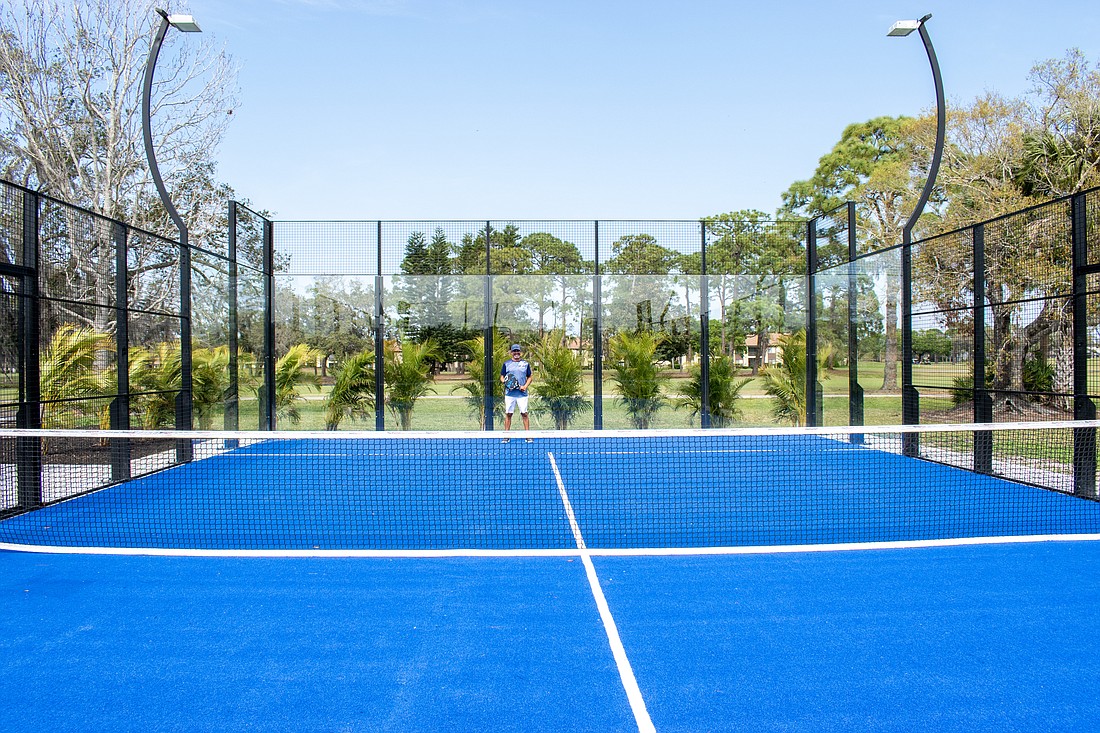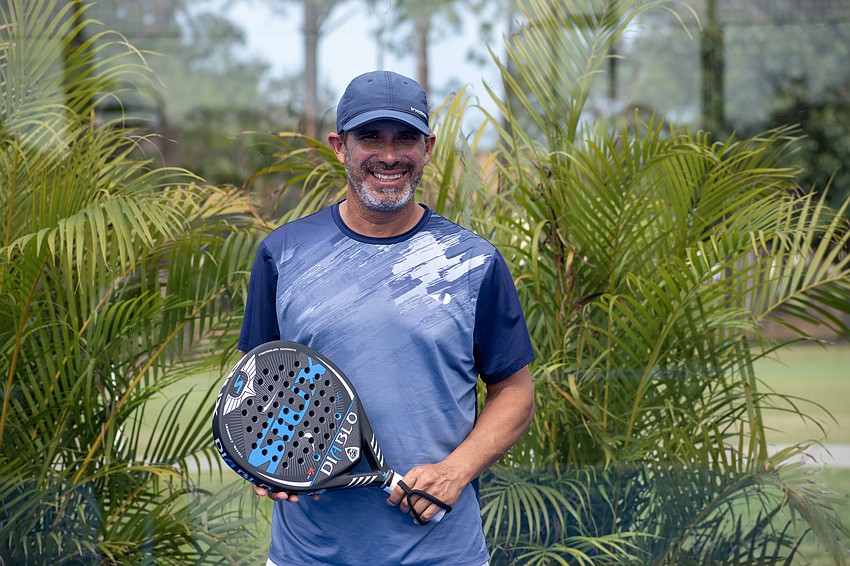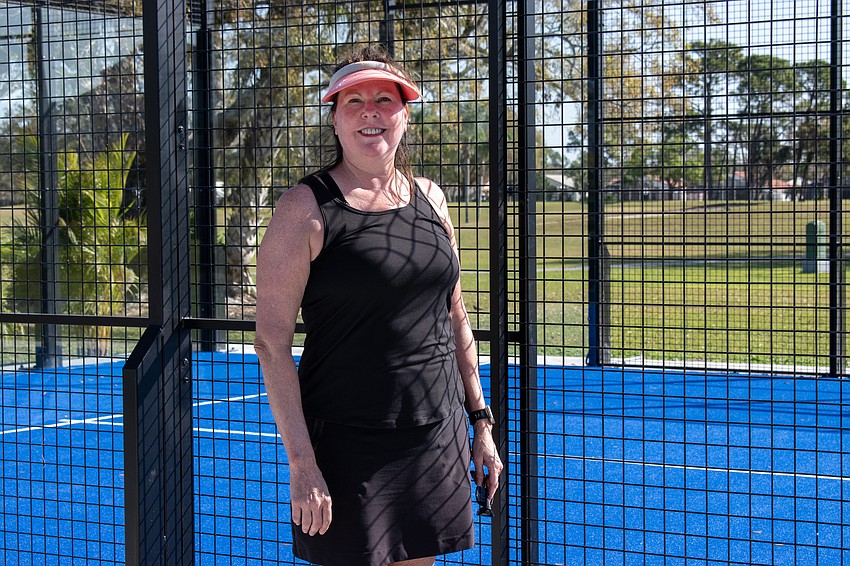- July 26, 2024
-
-
Loading

Loading

Feast your eyes on a padel court without context, and you'd be forgiven for getting confused.
The short court, about a third as long as a tennis court, is bright blue, and it is enclosed by two different materials. A metallic mesh wall lines the center of the court while the ends are surrounded by glass panels. What kind of sport could use a playing surface like this?
Well, padel — pronounced pa-dell, not paddle.
The racket sport is new to most people in the United States, but overseas, it is already a sensation. The sport originated in Mexico in the 1970s but now is biggest in Spain, which has more than 20,000 padel courts and four million active players. Miami was the first U.S. city to build padel courts in 2009.
As of Feb. 7, Palm Aire Country Club became the first private club in Florida to offer the sport to members and non-members (with a $35 guest fee), something that the club's director of tennis, Angel Davila, said will be a big success.

So, what is padel? It is most easily described as a cross between tennis and squash. The scoring is the same as tennis, but there's a big difference in play style, which is all about the glass walls on each end of the court. Players must their shots initially on the court's blue turf, but once the ball bounces, it can go anywhere — including off the wall. Then the return team has to hit it before it hits the ground a second time.
"You have to learn that just because ball gets past you, it doesn't mean the point is over," member Dick Coffey said. "You can still play the ball off the glass before it bounces again."
More advanced players also will smack the ball off the wall that lines their own end of the court as a return. Beginners should probably wait to attempt this move — lest they smash the ball off the wall and into their own face, Davila said. He's seen it happen, and it doesn't look fun.
There are other differences, too — the racket is cushioned and the ball is a bit spongier than a tennis ball — but anyone with experience with racket sports will quickly get the gist. One quirk of the sport is that it is most commonly played in doubles, which is why Palm Aire built a doubles court. After encountering the game for the first time 25 years ago, Davila said, he's never seen a singles padel court in person.
Based on the reception of Palm Aire's members, the game is worth the hype from overseas. Barry Sikes, the athletic chair on the club's board of governors, said he enjoys the game so much, he's planning on running open play groups on Wednesdays and Sundays. A lifelong player of racket sports, Sikes said the sport feels like a natural merger of the games he loves, and he's not alone.
"Everybody who has walked off the court after hitting a little bit has had a smile on their face," Sikes said.
Barbara Stebbins, who comes from a tennis background, said she was able to quickly adapt to padel's funky flow. Once she saw how the ball was bouncing off the turf and walls, she felt comfortable, and that comfort led to a great experience.
"Afterward, I was like, 'This is great. This is going to be my new sport,'" Stebbins said.

People who have hopped on the recent pickleball trend might want to watch some padel videos before giving it a go. Palm Aire's Kate Humphrey said she look a lesson with Davila to get a feel for the game and enjoyed it, but she wants another lesson or two before she'll be comfortable playing a live match.
Humphrey said she played racquetball in the 1970s, but recently has been playing pickleball as way to get more active. Going from that to padel is a challenge because the two sports' requirements are different, Humphrey said.
Pickleballers don't have to worry about turning around if the ball gets past. Padel, like tennis, involves more movement than pickleball. Humphrey said she had to take breaks during her hour-long padel lesson, while she can play pickleball for two hours and not get winded.
"But I like that aspect (of padel)," Humphrey said. "I get just as much exercise in one hour. It's a faster game."
It's also good for people worried about taking a spill. Padel's signature blue turf is soft, so if a player falls while going for a ball, they'll usually walk away with not much more than a scrape, unlike tennis and pickleball's unforgiving, hard-surface courts.
The biggest challenge for Palm Aire might be that padel becomes too popular. The club only has one court, and with dozens of members interested, space on the calendar can fill up quick
But it's a relatively good problem to have. The club can always add more courts.
Davila said he would not be surprised if the demand becomes high.
"This is going to grow, for all ages," Davila said. "It's a different market than pickleball. Padel is more athletic, so it's more exciting."
To book a padel lesson, you can call the Palm Aire tennis center at 351-4117. Spots for nonmembers are limited.